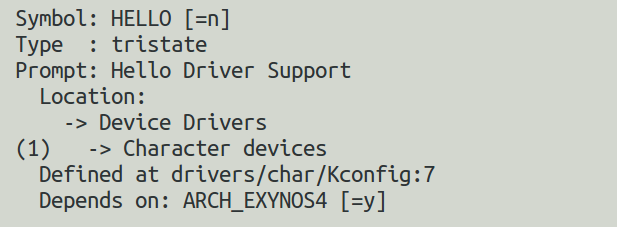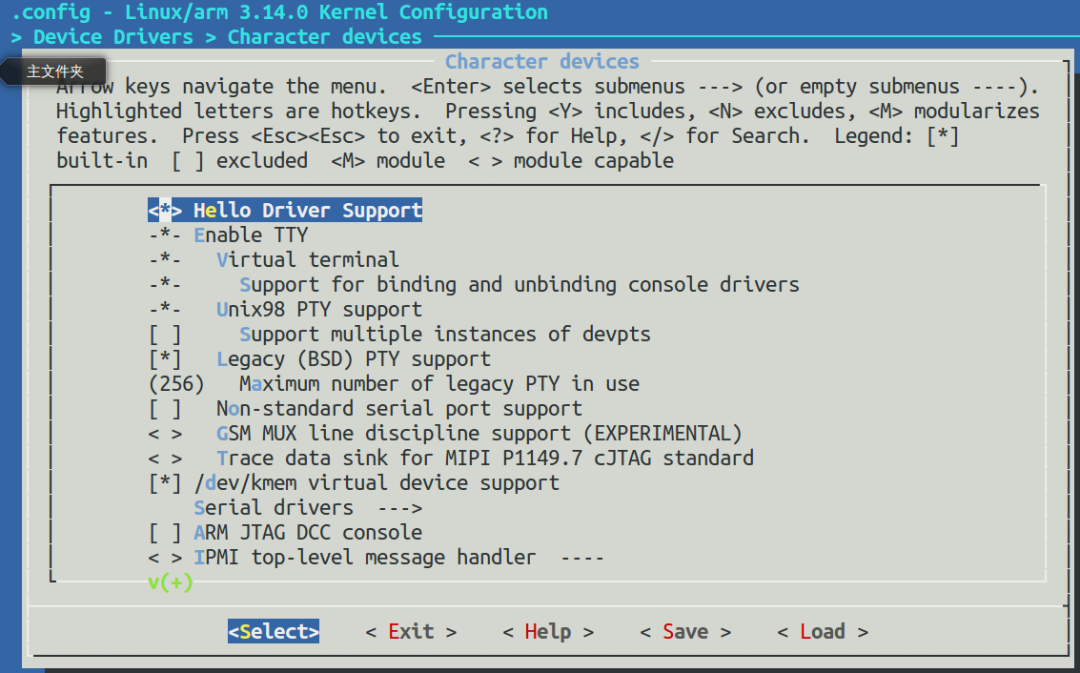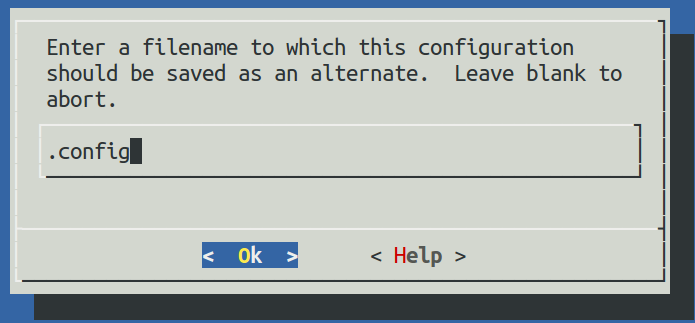1. 编译成独立模块
假定我们有以下驱动程序,要编译成可以加载到开发板的独立ko文件
hello.c
#include <linux/init.h>
#include <linux/module.h>
#include <linux/kdev_t.h>
#include <linux/fs.h>
#include <linux/cdev.h>
//#include <io/uaccess.h>
#include <linux/device.h>
#include <asm/io.h>
#include <asm/uaccess.h>
static int major = 237;
static int minor = 0;
static dev_t devno;
struct device *class_dev = NULL;
struct class *cls;
static int hello_open (struct inode *inode, struct file *filep)
{
printk("hello_open()\n");
return 0;
}
static int hello_release (struct inode *inode, struct file *filep)
{
printk("hello_release()\n");
return 0;
}
#define KMAX_LEN 32
char kbuf[KMAX_LEN+1] = "kernel";
//read(fd,buff,40);
static ssize_t hello_read (struct file *filep, char __user *buf, size_t size, loff_t *pos)
{
int error;
if(size > strlen(kbuf))
{
size = strlen(kbuf);
}
if(copy_to_user(buf,kbuf, size))
{
error = -EFAULT;
return error;
}
return size;
}
//write(fd,buff,40);
static ssize_t hello_write (struct file *filep, const char __user *buf, size_t size, loff_t *pos)
{
int error;
if(size > KMAX_LEN)
{
size = KMAX_LEN;
}
memset(kbuf,0,sizeof(kbuf));
if(copy_from_user(kbuf, buf, size))
{
error = -EFAULT;
return error;
}
printk("%s\n",kbuf);
return size;
}
static struct file_operations hello_ops =
{
.open = hello_open,
.release = hello_release,
.read = hello_read,
.write = hello_write,
};
static int hello_init(void)
{
int result;
printk("hello_init \n");
result = register_chrdev( major, "hello", &hello_ops);
if(result < 0)
{
printk("register_chrdev fail \n");
return result;
}
cls = class_create(THIS_MODULE, "hellocls");
if (IS_ERR(cls)) {
printk(KERN_ERR "class_create() failed for cls\n");
result = PTR_ERR(cls);
goto out_err_1;
}
devno = MKDEV(major, minor);
class_dev = device_create(cls, NULL, devno, NULL, "hellodev");
if (IS_ERR(class_dev)) {
result = PTR_ERR(class_dev);
goto out_err_2;
}
return 0;
out_err_2:
class_destroy(cls);
out_err_1:
unregister_chrdev(major,"hello");
return result;
}
static void hello_exit(void)
{
printk("hello_exit \n");
device_destroy(cls, devno);
class_destroy(cls);
unregister_chrdev(major,"hello");
return;
}
module_init(hello_init);
module_exit(hello_exit);
MODULE_LICENSE("GPL");
//proc/devices
注意我们需要编写Makefile如下:
ifneq ($(KERNELRELEASE),)
obj-m:=hello.o
else
KDIR :=/home/peng/linux-3.14
PWD :=$(shell pwd)
all:
make -C $(KDIR) M=$(PWD) modules
clean:
rm -f *.ko *.o *.mod.o *.symvers *.cmd *.mod.c *.order
endif
这里的内核源码的路径:
KDIR :=/home/peng/linux-3.14
编译时,程序可以放到其他目录下:

2. 编译到内核
步骤:
-
1)拷贝文件 如果要将刚才的驱动程序直接编译到内核,那么我们必须把hello.c拷贝到内核的某个目录下。
字符设备可以考虑放到以下目录:
linux-3.14/drivers/char

-
2)修改Makefile
root@ubuntu:/home/peng/linux-3.14/drivers/char# vim Makefile
修改如下:

该行内容是根据Kconfig文件中的宏CONFIG_HELLO来决定是否编译hello.c这个文件()。
-
3)修改Kconfig

7 HELLO 取前面步骤CONFIG_HELLO下划线后面的字符串,也就是HELLO
8 tristate 表示该模块最终有3个选项:空 、*、M
9 表示该模块依赖的模块,如果ARCH_EXYNOS4模块没有被选中,那么HELLO模块也不会被编译到内核
10 帮助信息
-
4) 重新配置 执行
make menuconfig
进入配置页面,
输入 / 可以根据关键字查找模块所在位置。

我们添加的模块文件的位置:

根据路径
-> Device Drivers
-> Character devices
找到我们刚才的模块配置路径

此处是尖括号,因为我们设置的属性是tristate
移动到Help处,可以看到前面我们填充的帮助信息
我们可以按下空格键设置为*,编译到内核中。
选择Save,


然后再点击2次Exit,就可以退出。
-
5)重新编译内核
root@ubuntu:/home/peng/linux-3.14# make uImage
这样,我们的模块编译到了新生成的内核模块文件中。
3. 补充
前面一节其实最终目的是生成CONFIG_HELLO=y 这个定义信息,并把该信息保存到内核根目录的.config文件中。

其实我们如果不修改Kconfig,直接在.config中增加这个宏定义也是可以的。





















 1115
1115











 被折叠的 条评论
为什么被折叠?
被折叠的 条评论
为什么被折叠?








